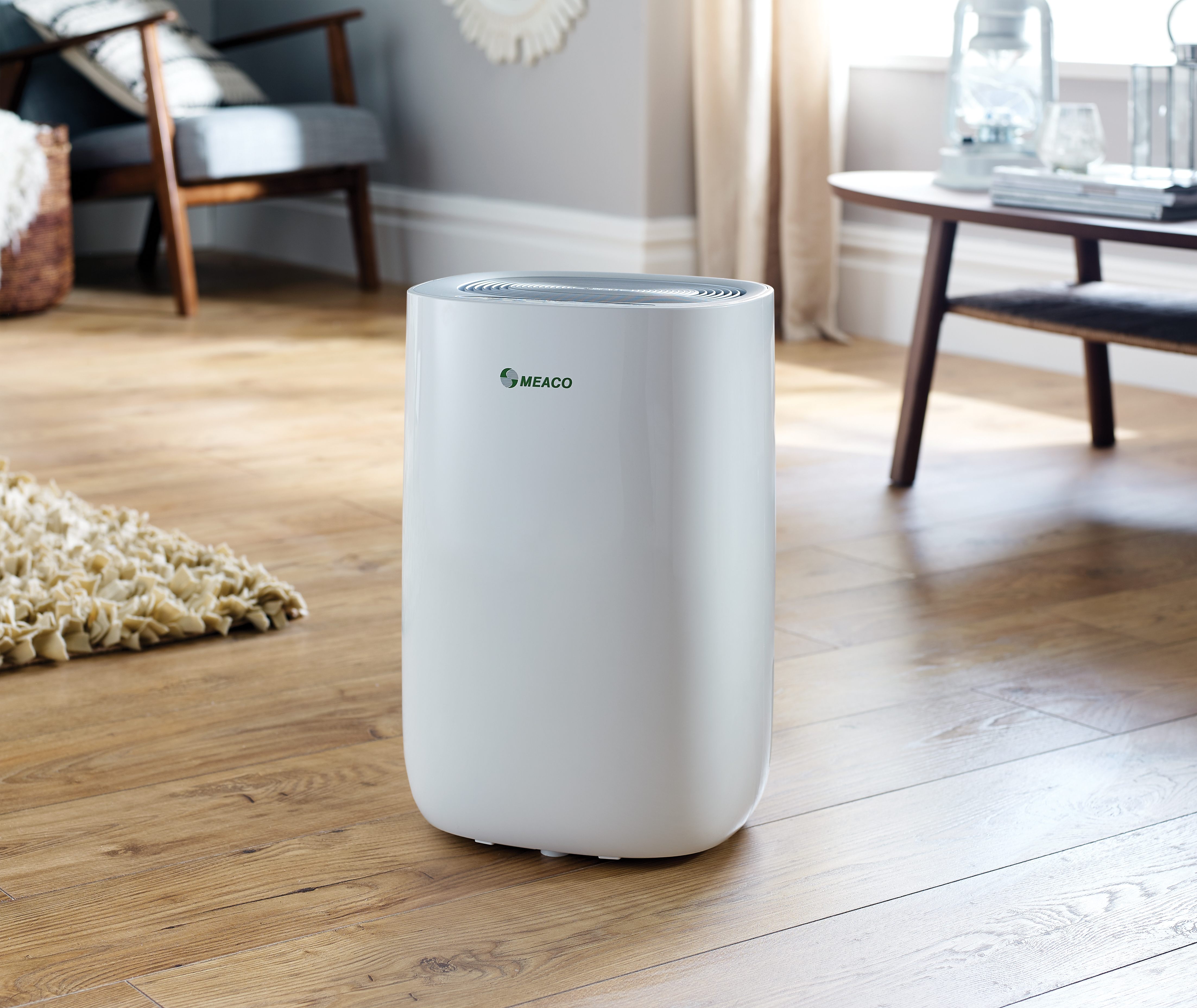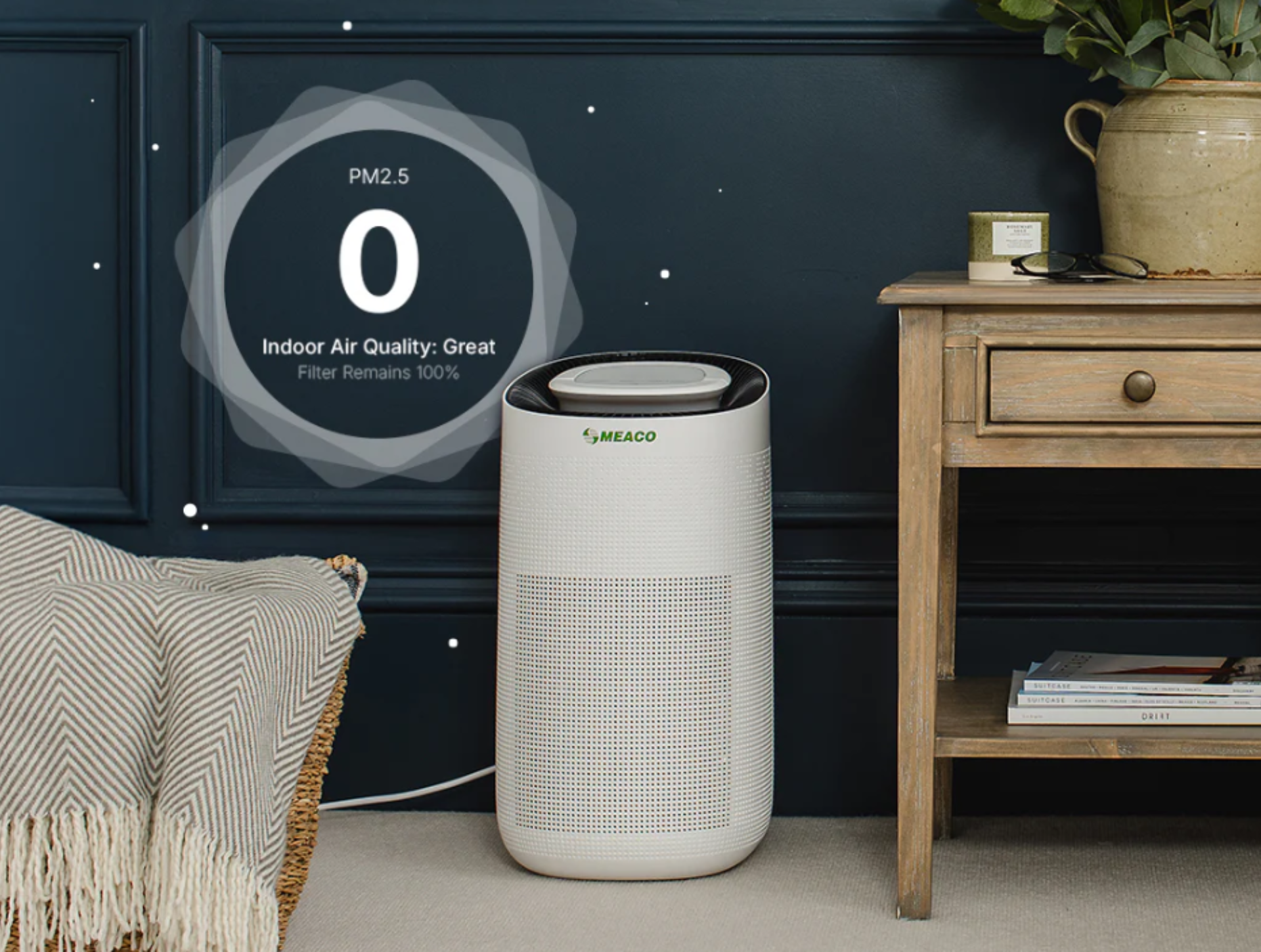
Despite being a common problem in the home, many of us are unaware of where mould comes from and how to stop it from growing. The best way to prevent mould appearing and spreading is to understand why it appears and what contributes to its growth.
Mould grows when the relative humidity (RH) on a surface is above 68%. The average relative humidity throughout the year for much of the UK is higher than this. During mild weather, warm, humid air comes through your home’s open windows and meets cooler, organic surfaces. This is where mould begins to form – hence why mould is particularly prevalent in basements.
Two main factors contribute to mould growth
Mould growth is caused mainly by the temperature and moisture levels in a space. If a room has a high moisture content internally, mould begins to grow on organic materials. This is why it is common to see mould growth in bathrooms as showering / bathing increases the moisture and humidity levels in that room.
Drying laundry naturally indoors on airers will also increase the moisture in the air, which needs to go somewhere. Think about a solution such as a dehumidifier to help reduce the humidity levels at home.
To reduce mould growth, you can start by identifying what is contributing to the levels of humidity in your home. Could something be contributing to this, like a leaky pipe or a poor seal around a window? It’s common for households to see mould on sofas and beds, and this can be from items of furniture touching an outside wall. How can these causes be rectified?

External issues with your property can cause mould indoors
External problems with a home, such as a blocked gutter, blocked air bricks, water runoff, cracks, damaged windows, or loose roof tiles can lead to mould growing inside your home. This is because of water accidentally entering your home and creating excess moisture in the air. Moss or ivy growing on a roof or wall can also cause issues as it holds moisture, increasing the humidity in your home.
A good place to start is to simply walk outside and spend some time looking at your property. Can you see some of these issues, and are there simple fixes you can make without paying for professional help? Fixing issues like this will reduce indoor humidity and help combat mould that could be growing.
Colder surface temperatures will make mould growth worse
Heating will lower the relative humidity in a property but when the air contacts a cold surface, it cools and its relative humidity increases. If the relative humidity in the room is 60% and the surface temperature of the wall or surface is even as little as 2-3°C cooler than the room, then the relative humidity at the surface will be 68% or higher. Maintaining an optimal relative humidity of 55% at home provides a buffer against temporary humidity increases or cold surfaces increasing moisture levels.
Preventing mould doesn’t need to be expensive
We can probably all make improvements in our home to reduce the chances of mould growing. Aside from fixing any issues contributing to mould growth externally, there are simple tasks we can do in the home to reduce humidity.
Ventilation is very important and while many of our bathrooms are fitted with an extractor fan, their efficiency reduces overtime with dust and dirt build up. Many households also choose to switch them off, perhaps because they’re noisy or are worried about electricity consumption, but they’re a vital tool in the battle against mould.
Cleaning the extractor fan regularly improves its ability to reduce humidity in the bathroom. An easy way to check whether an extractor fan is working correctly is to hold a piece of A4 paper up to the fan. If it sticks, then the fan is working well, however if the paper falls away then it is not functioning correctly.
Moisture is always present in the home, but actions like putting lids on saucepans when cooking and doing an extra spin cycle when using the washing machine to avoid excessively damp clothes drying will help reduce how much our day-to-day actions contribute to this. By preventing mould as much as possible, you won’t need to treat outbreaks with cleaning chemicals which can be time consuming and costly.

Dehumidifiers can help reduce the causes of mould
A dehumidifier is the perfect home appliance for extracting moisture from the home. While there is an initial cost, many dehumidifiers are highly energy-efficient, with some costing as little as 4p per hour to run. Using a dehumidifier to dry laundry is more cost-effective than a tumble dryer and could save you as much as 95p when drying a load of washing*.
Some dehumidifiers also offer further benefits with built-in air purifiers, providing added value. In the long run, the energy efficiency of a dehumidifier can save households hundreds of pounds per year by reducing moisture levels. Many can be saved both on the running costs for drying laundry as well as potential long term problems of mould build up.
Understanding these key facts about mould and implementing the suggested prevention methods can help you maintain a healthier and mould-free environment, safeguarding both your health and home.
*Based on a dehumidifier that can extract up to 12 litres a day and runs at 0.157 kWh, washing drying within six hours (length of a Meaco dehumidifier’s laundry mode), and the average tumble dryer using roughly 4.5kWh per cycle. Calculations are based on the price of 27p per kWh (October 2023).
Products featured:







